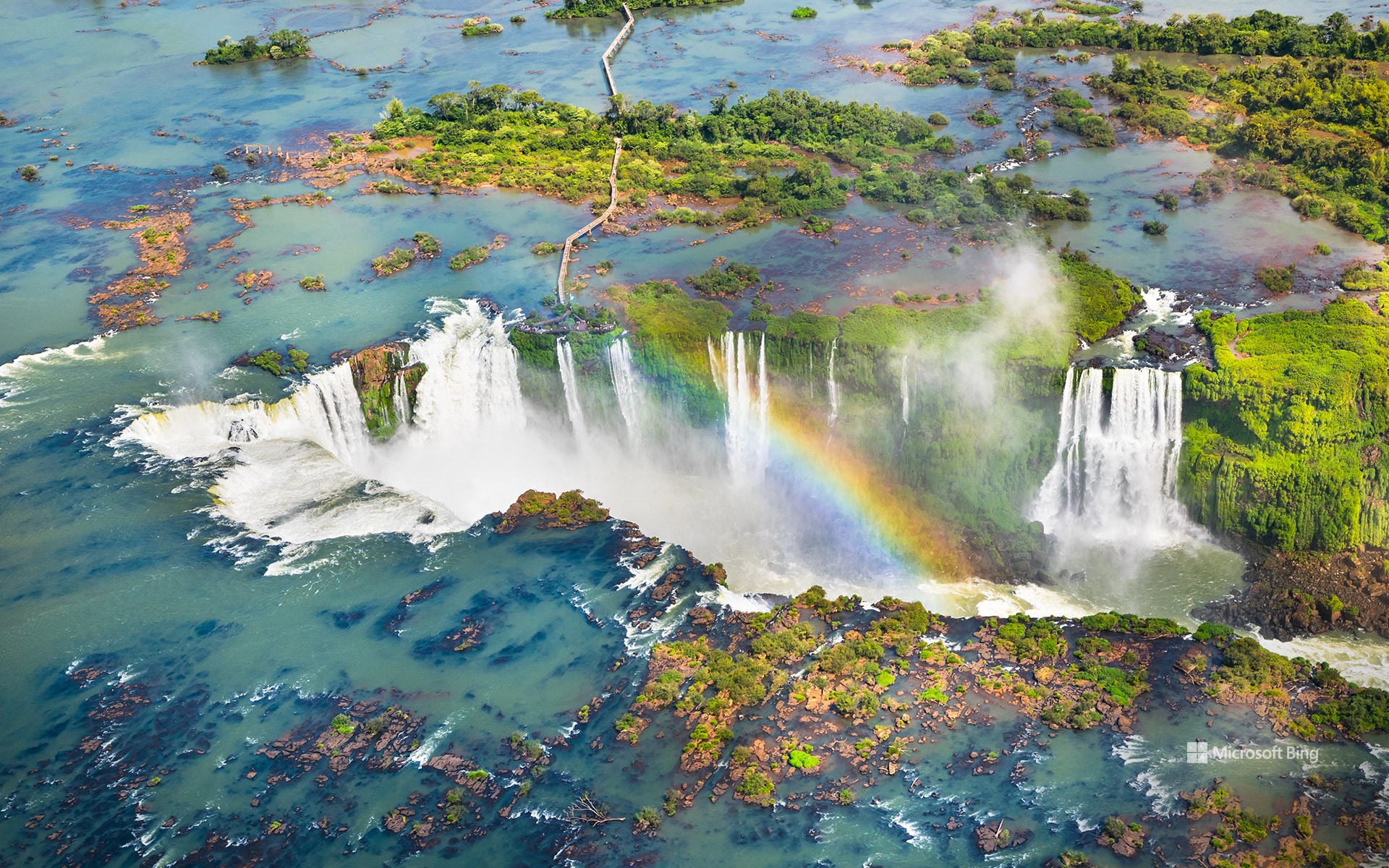标签 巴西 下的文章
圣卡塔琳娜州的海滩, 巴西 Beach in Santa Catarina, Brazil (© CaioCarvalhoPhotography/Getty Images)
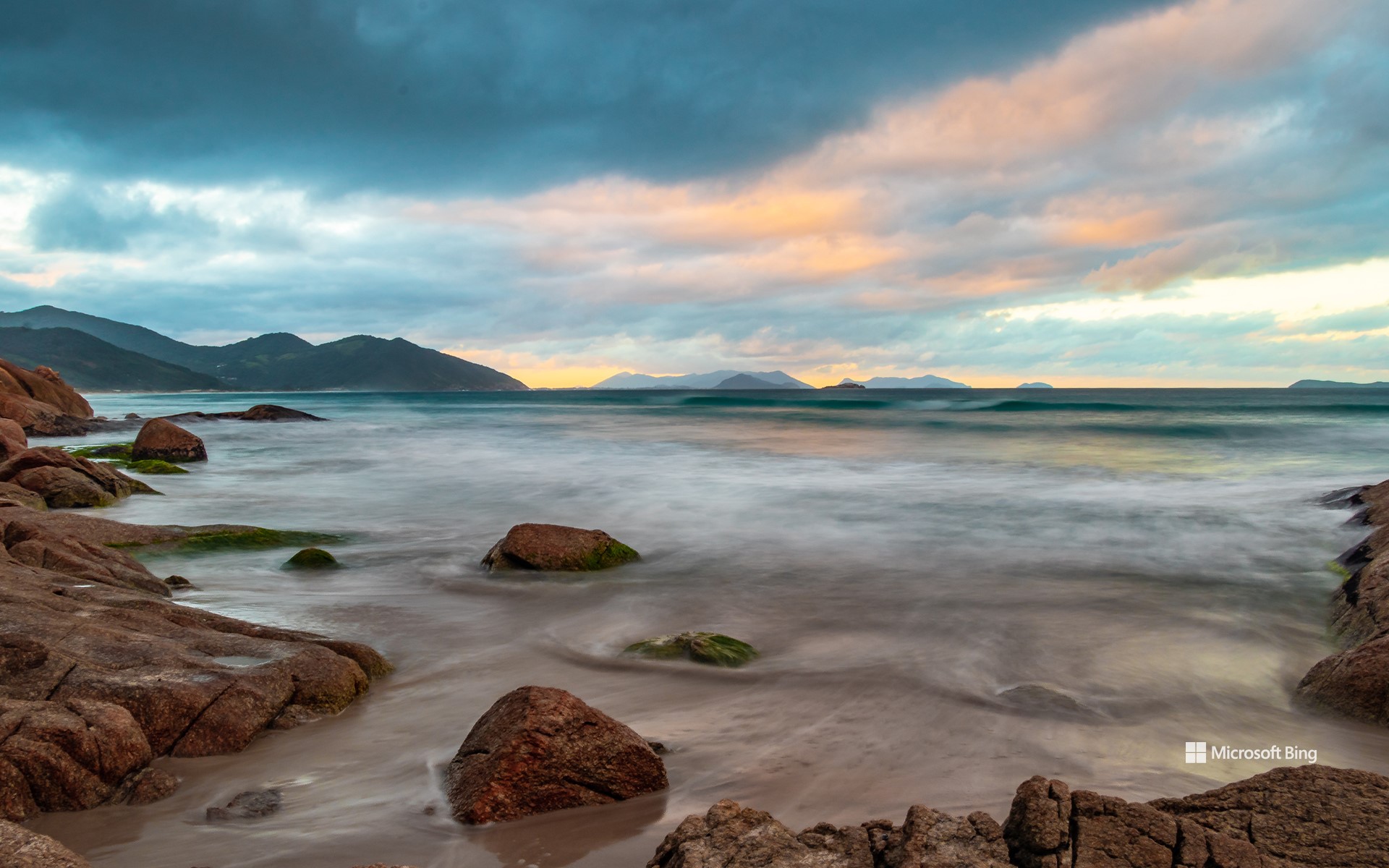
圣卡塔琳娜州的海滩, 巴西 Beach in Santa Catarina, Brazil (© CaioCarvalhoPhotography/Getty Images)
潮汐与时间交汇之地 Where tides meet time
圣卡塔琳娜州的海滩, 巴西
圣卡塔琳娜州位于巴西南部,其海岸线沿大西洋延展超过560公里,是一处汇聚历史演进与人类活动的多元文化地带。在欧洲航海者首次抵达前,图皮瓜拉尼族等原住民族群已在此定居,依赖捕鱼与农业生计,并与自然环境建立了密切联系。1529年,随着航海探险的发展,该地区被绘入地图,“圣卡塔琳娜”一名首次出现在世界地理文献中。
圣卡塔琳娜海岸的自然景观同样引人注目。这里拥有广阔沙滩、嶙峋海崖、静谧潟湖,以及绵延至海岸的大西洋沿岸森林生态系统。宽吻海豚在波浪间嬉戏,候鸟群体停驻于河口湿地,而海龟则每年按时回到保护区域筑巢产卵。在这片土地上,古老文化的遗迹与原生态自然共存,共同构成一个兼具历史厚度与生态多样性的独特区域。
圣卡塔琳娜海岸的自然景观同样引人注目。这里拥有广阔沙滩、嶙峋海崖、静谧潟湖,以及绵延至海岸的大西洋沿岸森林生态系统。宽吻海豚在波浪间嬉戏,候鸟群体停驻于河口湿地,而海龟则每年按时回到保护区域筑巢产卵。在这片土地上,古老文化的遗迹与原生态自然共存,共同构成一个兼具历史厚度与生态多样性的独特区域。
福玛萨瀑布,迪亚曼蒂纳,巴西 (© Pulsar Images/Alamy)
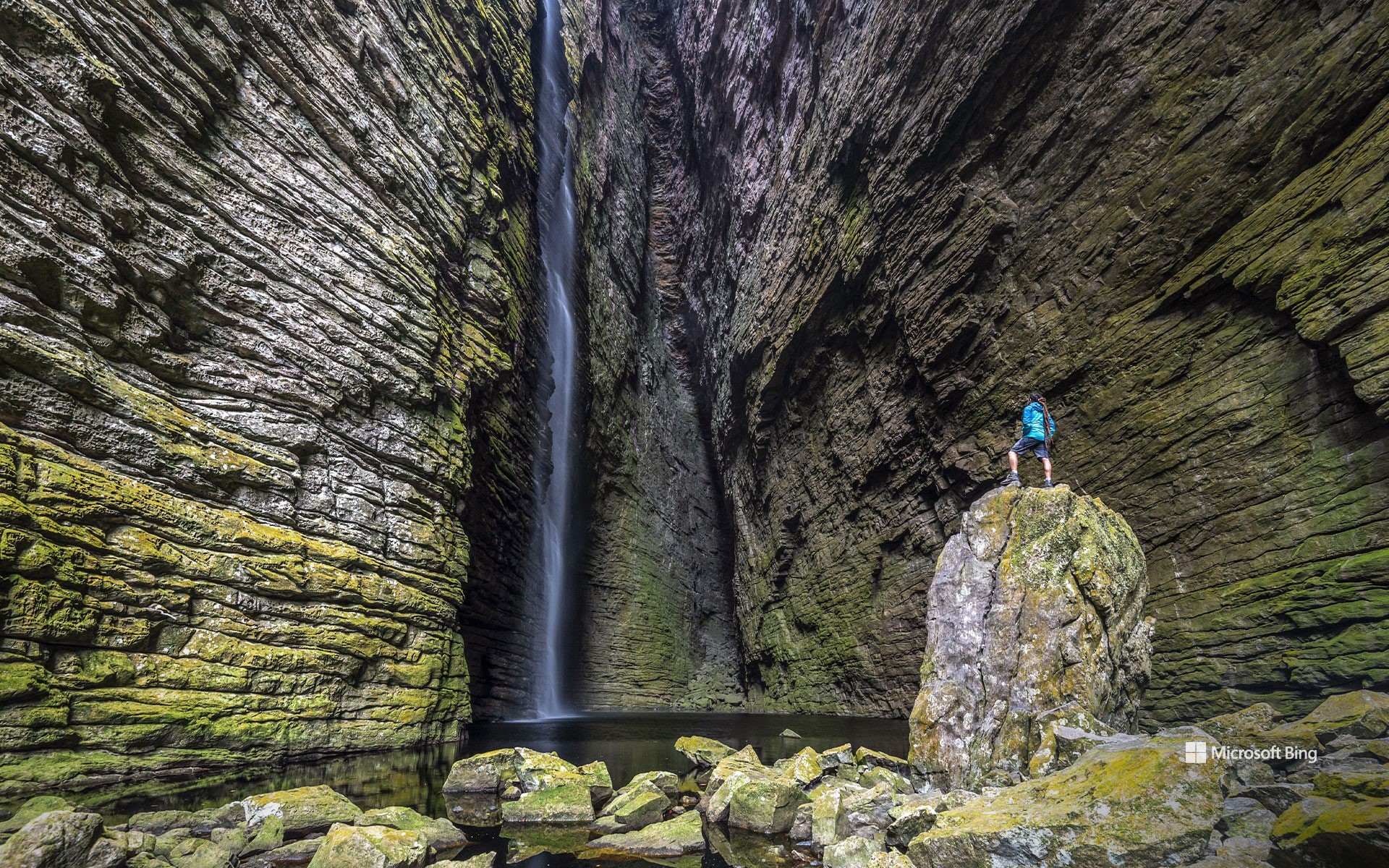
福玛萨瀑布,迪亚曼蒂纳,巴西 (© Pulsar Images/Alamy)
隐藏的美景
福玛萨瀑布,迪亚曼蒂纳高地国家公园,巴西
今日图片带我们走近迪亚曼蒂纳高地国家公园中最壮观、却极少有人踏足的瀑布之一福玛萨瀑布。该瀑布位于巴伊亚州,垂直落差约为100米。通往瀑布的小径始于巴伊绍村,由于地形陡峭,被评为高难度路线。
瀑布水流平缓,水雾缭绕,因此得名。水流坠落的回响在峡谷中反复回荡,营造出独特的感官体验。瀑布周围栖息着多种野生动物,包括异域鸟类与小型哺乳动物,进一步增强了置身于原始自然之中的沉浸感。
迪亚曼蒂纳高地国家公园于1985年9月17日设立,占地约15.2万公顷。除福玛萨瀑布与壮丽的自然景观外,公园还拥有诸多自然奇观,例如拉帕多塞洞穴与帕伊伊纳西奥山。这些景致使迪亚曼蒂纳成为探险爱好者心中的理想目的地。
从巴拉那州看到的伊瓜苏瀑布, 巴西 Iguazu Falls seen from Paraná, Brazil (© agustavop/Getty Images)
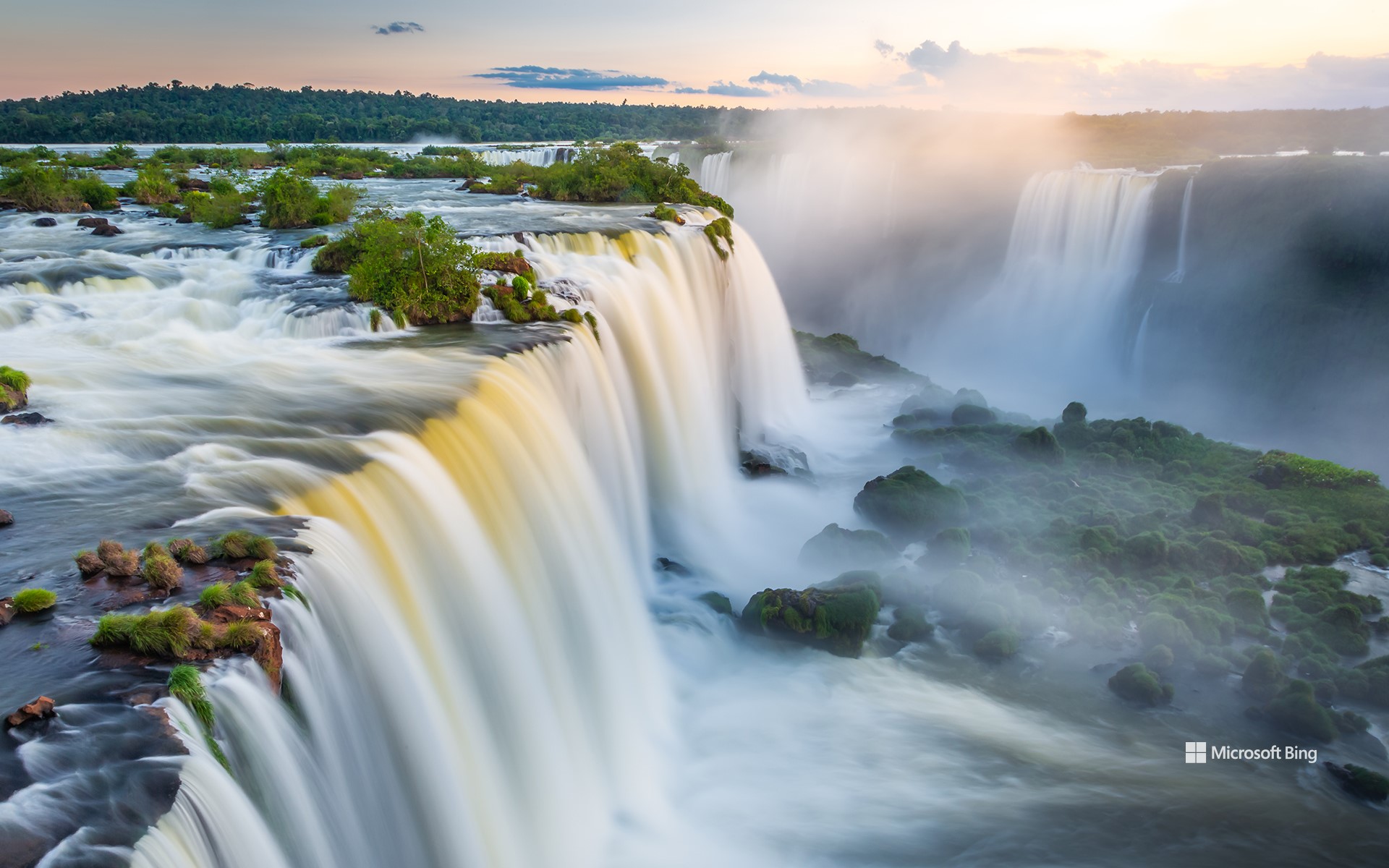
从巴拉那州看到的伊瓜苏瀑布, 巴西 Iguazu Falls seen from Paraná, Brazil (© agustavop/Getty Images)
瀑布声在各国间回响 Falls echo among nations
从巴拉那州看到的伊瓜苏瀑布, 巴西
伊瓜苏市是一处由大自然雕琢出的奇观,今日图片仅捕捉到其壮丽景色的一角。位于巴拉那州西南角,这片边境地带回荡着瀑布震耳欲聋的轰鸣声,每秒数百万升水以狂野而迷人的姿态倾泻而下。瀑布腾起的水雾在空中绘出道道彩虹,河流的力量将这片土地塑造成一幅仿佛有生命、不断变化的画卷。
但伊瓜苏的魅力不仅止于瀑布。它是一片充满活力的文化拼图,巴西、阿根廷和巴拉圭三国在此交汇。在集市上,语言与香气交织碰撞,展现出这个多元地区跳动的不同节奏。伊瓜苏国家公园是稀有物种的栖息地,而“三国交界纪念碑”提醒着人们,在这里,历史与传统之间没有边界。在葱郁的自然与国际化都市的活力之间,伊瓜苏也拥抱着未来,通过可持续旅游,确保这份宏伟得以世代相传。在这里,每一滴水、每一条小径、每一次相遇,都诉说着关于美丽、力量与联结的故事。
科帕卡巴纳海滩除夕烟花, 里约热内卢, 巴西 New Year's Eve fireworks over Copacabana Beach, Rio de Janeiro, Brazil (© Wagner Meier/Getty Images)
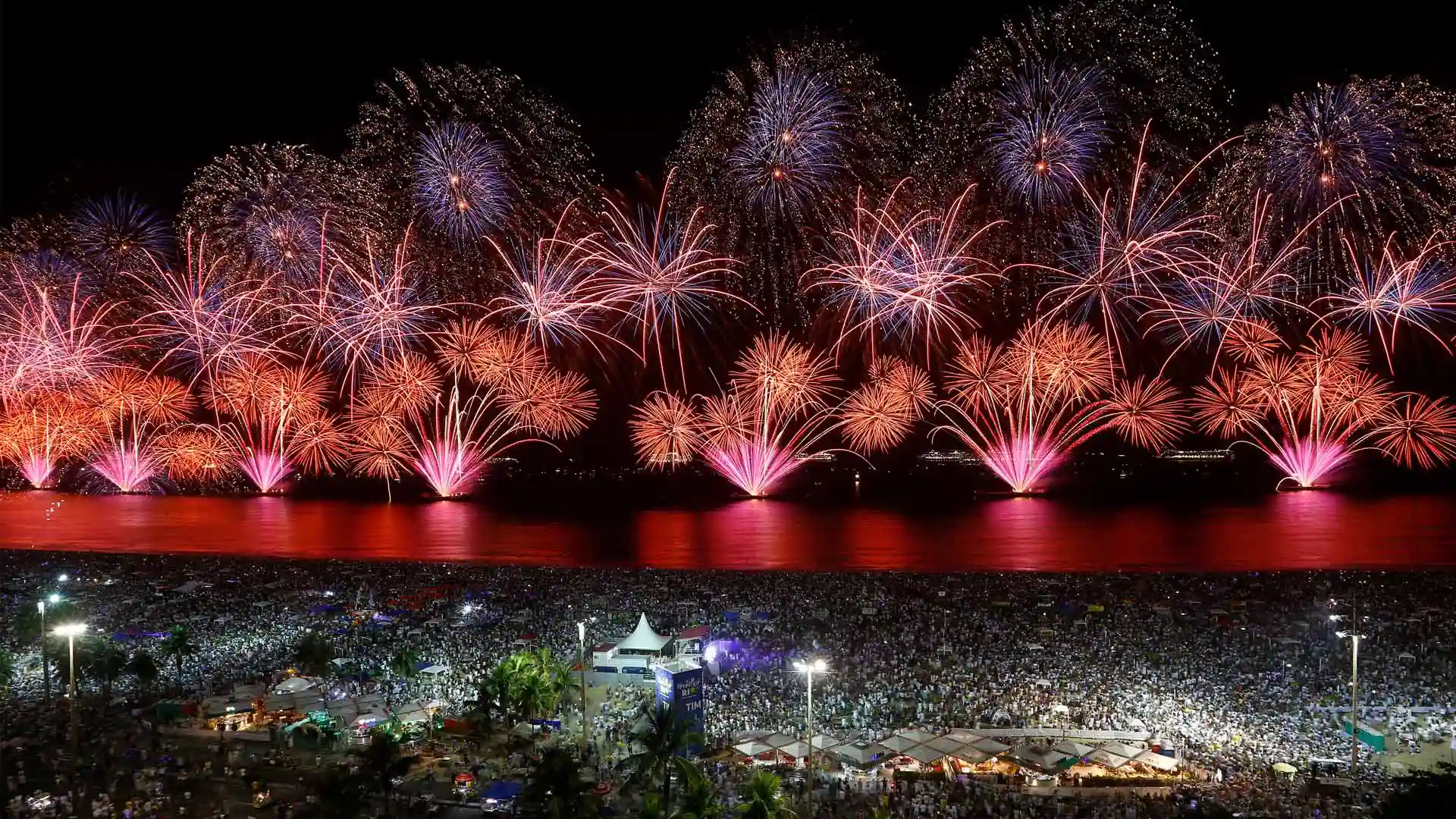
科帕卡巴纳海滩除夕烟花, 里约热内卢, 巴西 New Year's Eve fireworks over Copacabana Beach, Rio de Janeiro, Brazil (© Wagner Meier/Getty Images)
里约的午夜 Midnight in Rio
巴西里约热内卢的新年前夜
除夕,也被称为元旦,世界各地都会举行狂欢、烟花表演,以及一些宗教和文化仪式。许多国家用象征繁荣、长寿和来年好运的食物庆祝,许多人在午夜时分唱起苏格兰民歌《友谊地久天长》,纪念老朋友和过去的经历。在一个可以追溯到古希腊的传统中,新年通常被拟人化为一个婴儿,与一个代表即将结束的一年的老人配对。
聚会是迎接新年的常见方式,巴西里约热内卢举办了一场难忘的聚会。里约以许多事情而闻名,包括丰富多彩、热闹非凡的庆祝活动、美丽的海滩,以及今天在科帕卡巴纳海滩举行的免费除夕派对。当地人称之为Réveillon,这是世界上最大的除夕晚会,有数百万狂欢者。
New Year's Eve in Rio de Janeiro, Brazil
New Year's Eve, also known as Old Year's Day, is celebrated around the world with revelry, fireworks, and for some, religious and cultural observances. Many countries celebrate with foods symbolic of prosperity, long life, and good fortune for the coming year, and many people sing the Scottish folk song 'Auld Lang Syne' at the stroke of midnight in remembrance of old friends and past experiences. In a tradition that dates back to the ancient Greeks, the new year is often personified as a baby that is paired with an old man who represents the year that is ending.
Get-togethers are a common way to ring in the new year, and Rio de Janeiro, Brazil, throws a memorable one. Rio is known for many things, including colorful, exuberant celebrations, glorious beaches, and the free New Year's Eve party at Copacabana Beach, seen in today's image. Known as Réveillon to locals, this New Year's Eve soiree is the largest in the world, with millions of revelers.
里约热内卢州的阿拉亚尔多卡博,巴西 Arraial do Cabo in the state of Rio de Janeiro, Brazil (© Derson Santana/Shutterstock)
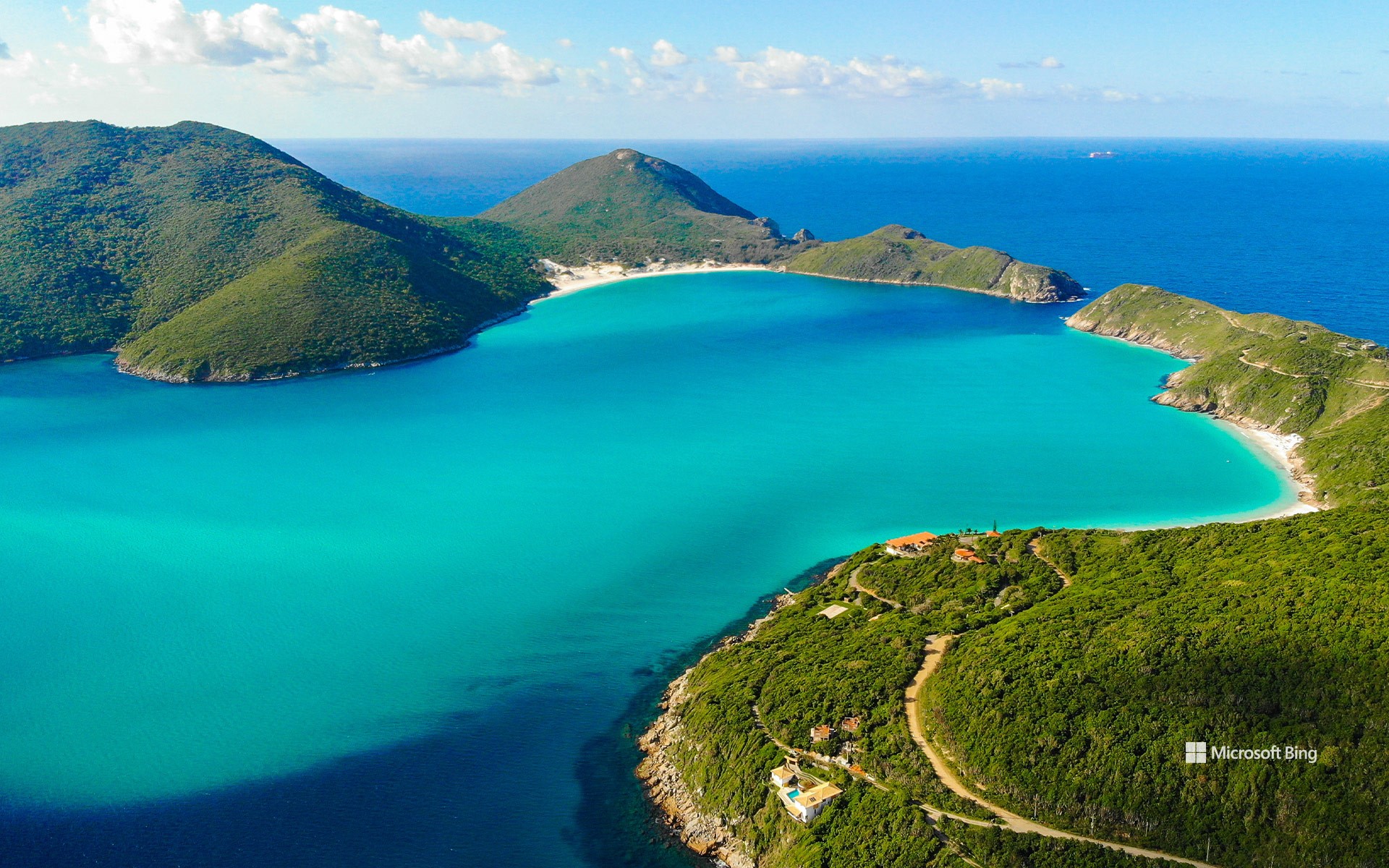
里约热内卢州的阿拉亚尔多卡博,巴西 Arraial do Cabo in the state of Rio de Janeiro, Brazil (© Derson Santana/Shutterstock)
自然奇观的蓝色魅力 The blue charm of a natural spectacle
阿拉亚尔多卡博,巴西
让我们一起来探索位于阿拉亚尔多卡博的蓬塔尔杜阿塔拉亚的壮丽美景!这个地点位于巴西里约热内卢,以提供该地区最美丽的景点之一而闻名,在这里可以将周围的海滩和岛屿尽收眼底。想象一下,从这个得天独厚的制高点观看日落,海天一色,美不胜收。要前往著名的庞塔尔海滩,您必须走过一个拥有着250多级台阶的标志性阶梯——阶梯上的景色和海滩本身一样令人印象深刻,透明的海水和洁白的沙滩让 “巴西加勒比海 ”的绰号名副其实。
阿拉伊阿尔港还是联合国教科文组织大西洋雨林生物圈保护区,也是珍稀植物标本的故乡。这个永久保护区因其岩石海岸而受到国家宪法的保护,同时确保其自然美景和生物多样性也能得到保护。快来探索这片世外桃源吧,将大自然的壮丽景色尽收眼底!
马拉赫塞斯国家公园,马拉尼昂州, 巴西 Sunset in Lençóis Maranhenses National Park, Maranhão, Brazil (© thanosquest/Shutterstock)
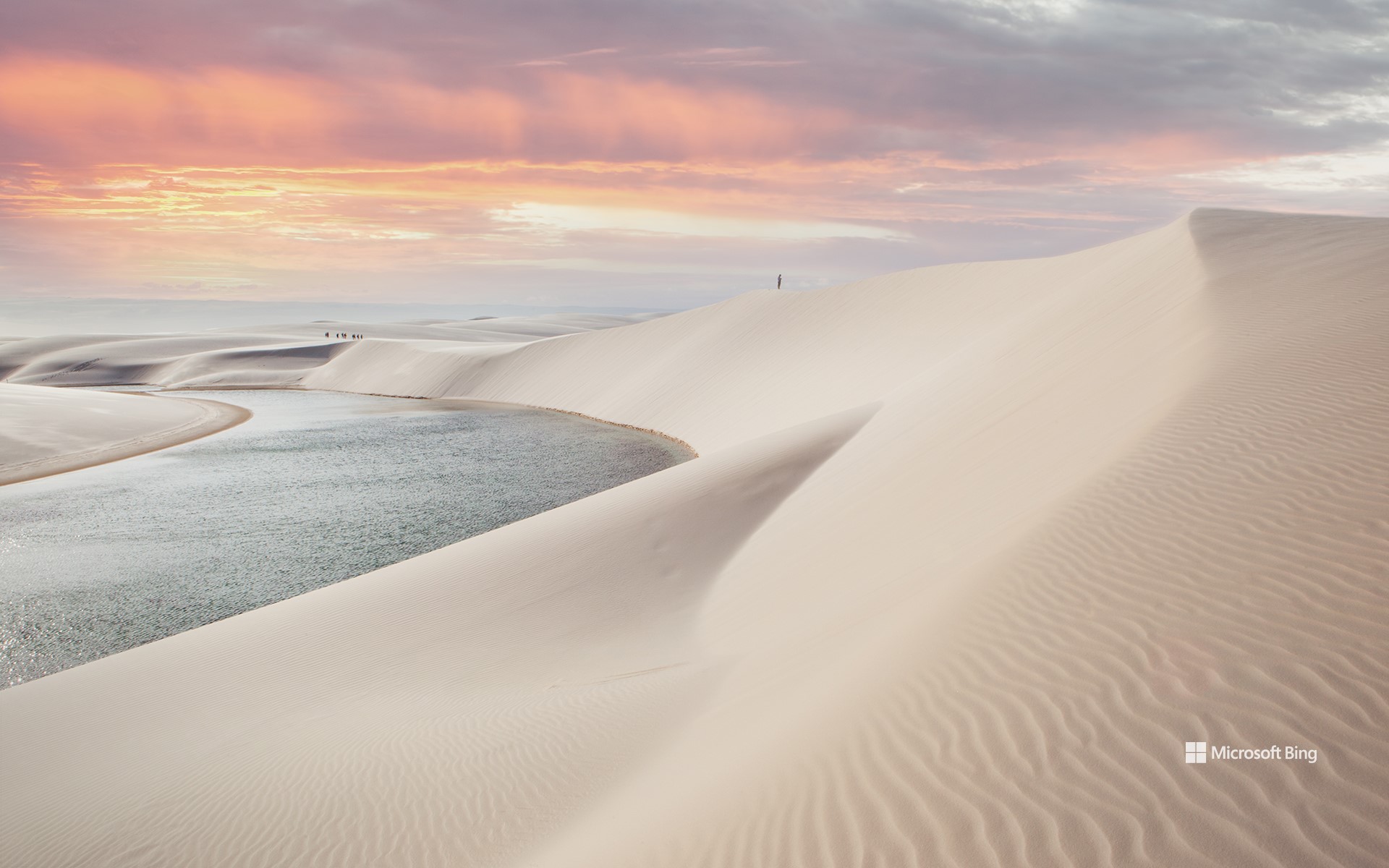
马拉赫塞斯国家公园,马拉尼昂州, 巴西 Sunset in Lençóis Maranhenses National Park, Maranhão, Brazil (© thanosquest/Shutterstock)
异世界之美 Otherworldly beauty
马拉赫塞斯国家公园,巴西
让我们一起来领略马拉赫塞斯国家公园令人惊叹的美景吧!该公园位于巴西马拉尼昂州东北部,是一个占地面积超过15万公顷的保护区。作为沿海海洋和塞拉多生物群落的一部分,该公园旨在保护该地区的动植物和自然美景,是真正的生态宝藏。在这里,我们可以看到在强风和定期降雨的作用下形成的红树林、沙洲和沙丘等独特的生态系统。
除了其重要的环保意义,马拉赫塞斯国家公园还以其优美的风景而闻名,曾被选为电影《复仇者联盟3:无限战争》和《复仇者联盟4:终局之战》的拍摄地。游客可以乘坐生态旅游车穿越沙丘,在水晶般清澈的泻湖中沐浴,并观赏繁星点点的夜空。公园因其独特的美景和世界上独一无二的自然现象而闻名于世,常年吸引着来自世界各地的游客,并于2024年7月被联合国教科文组织列为世界遗产。快来探索这片自然的天堂,沉醉于这令人惊叹的风景中吧!
阿根廷和巴西边境的伊瓜苏瀑布 Iguazu Falls at the border of Argentina and Brazil (© AirPano LLC/Amazing Aerial Agency)
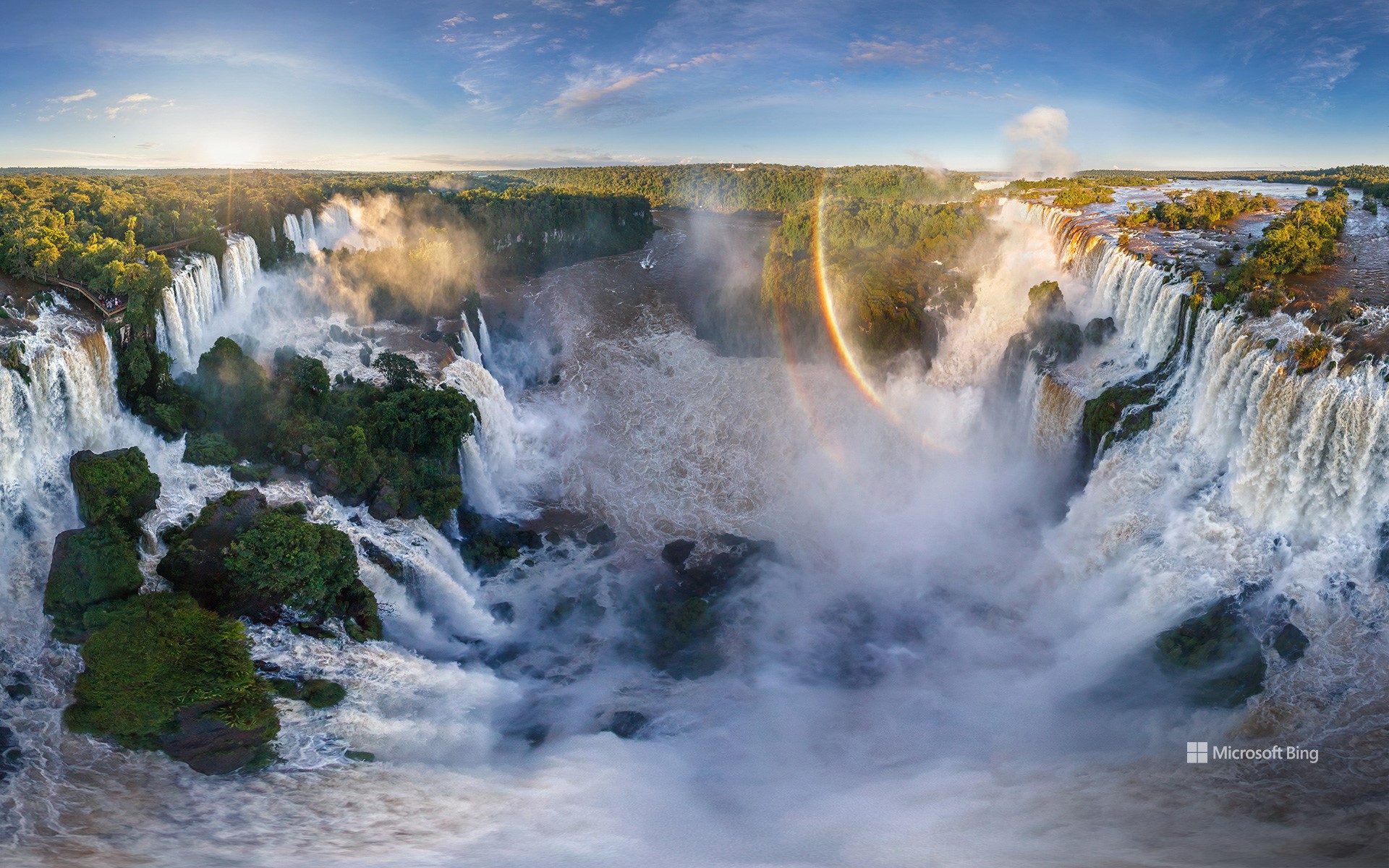
阿根廷和巴西边境的伊瓜苏瀑布 Iguazu Falls at the border of Argentina and Brazil (© AirPano LLC/Amazing Aerial Agency)
“大水”中的彩虹波 Rainbow waves in 'big water'
阿根廷和巴西边境的伊瓜苏瀑布
想亲眼目睹让尼亚加拉瀑布都望尘莫及的壮观瀑布吗?让我们走进世界上最大的瀑布群——伊瓜苏瀑布。“伊瓜苏”这个名字来源于瓜拉尼语或图皮语,意思是“大水”。这些瀑布群由伊瓜苏河形成,位于阿根廷米西奥内斯省和巴西巴拉那州的交界处。它们拥有独特的阶梯状结构,是由三层玄武岩形成的两级阶梯式瀑布,非常引人注目。
在这些瀑布成为我们今天所熟知的旅游胜地之前,它们经历了一段相当漫长的旅程。西班牙探险家阿尔瓦·努涅斯·卡韦萨·德·巴卡可能是第一个看到这些瀑布的欧洲人。1917年,商人多明戈·阿亚拉加雷看到了这个地区的潜力,并建造了酒店和道路。随后,这个瀑布群成为了一个热门的旅游胜地。于是在1934年,阿根廷建立了伊瓜苏国家公园。在1939年,巴西也建立了伊瓜苏国家公园。联合国教科文组织分别在1984年和1986年将这两个国家公园列为世界遗产,并认定它们具有“杰出的普遍价值”。
Iguazu Falls at the border of Argentina and Brazil
Welcome to Iguazu Falls, the largest waterfall system in the world. The name 'Iguazu' has its origins in the regional languages Guarani or Tupi, meaning 'big water.' These epic waterfalls are formed by the Iguazu River, on the border of Argentina's Misiones province and Brazil's Paraná state.
The Iguazu Falls have long attracted admirers. Spanish explorer Alvar Núñez Cabeza de Vaca is thought to have been the first European to see them in 1541. In 1907, businessman Domingo Ayarragaray saw their potential and built a hotel and roads nearby. The falls became such a sensation that they were designated as national parks in both countries—Argentina's Iguazu National Park in 1934 and Brazil's Iguaçu National Park in 1939. UNESCO made the parks World Heritage Sites in 1984 and 1986, respectively. Surrounded by the rainforest, the falls are made up of hundreds of cascades and channels carved over millions of years by the Iguazu River, the tallest of which is the U-shaped Devil's Throat, at 269 feet high.
亚马逊雨林,巴西 Amazon rainforest, Brazil (© Claus Meyer/plainpicture)
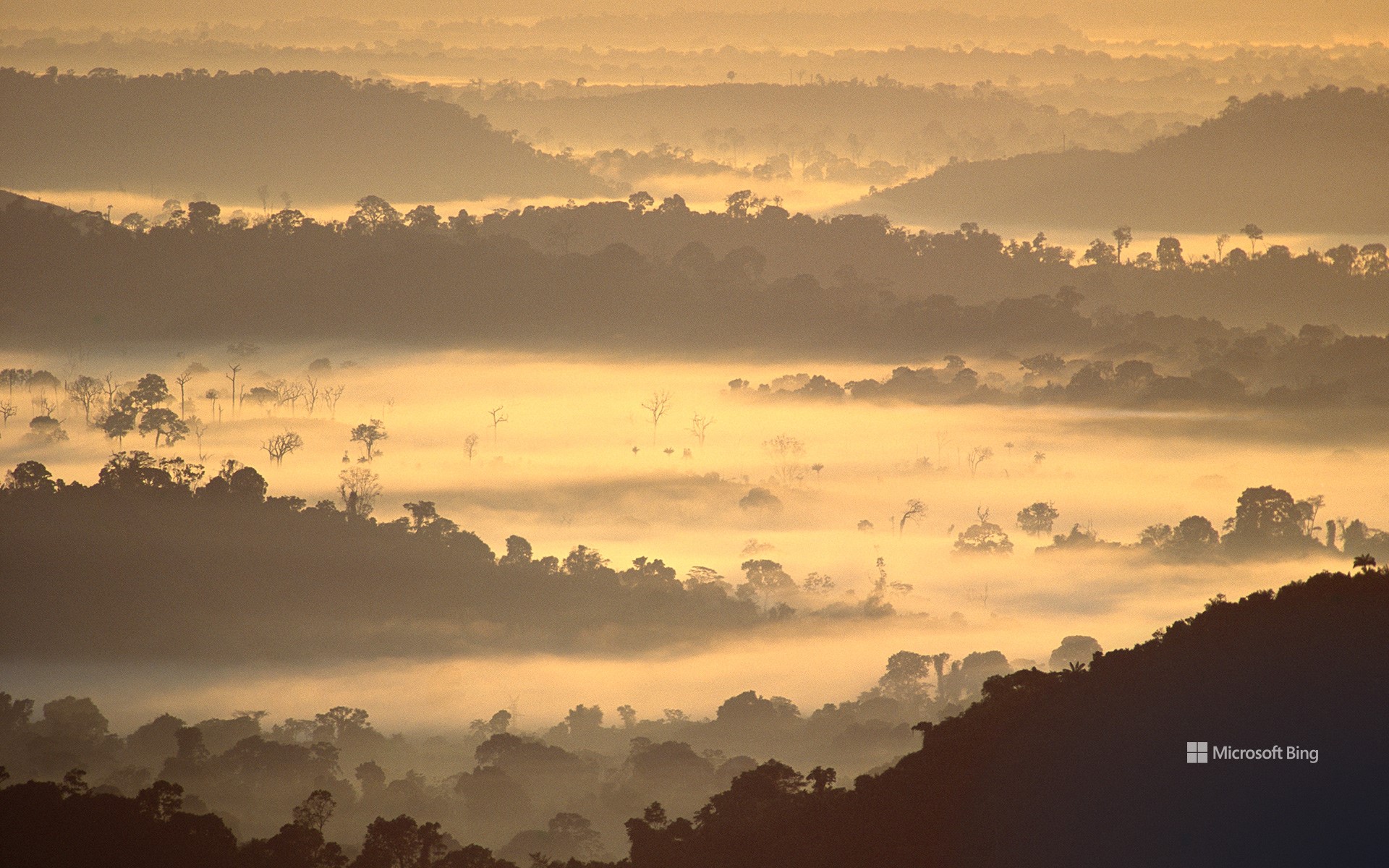
亚马逊雨林,巴西 Amazon rainforest, Brazil (© Claus Meyer/plainpicture)
迷失在迷雾之中 Getting lost in the mist
世界雨林日
欢迎来到亚马逊雨林,这里有清新的空气,茂密的树叶,沙沙作响的树叶,还有成千上万种动物和鸟类的叫声。今天是世界雨林日,让我们向这片土地致敬。亚马逊雨林是南美洲的生态瑰宝,面积超过210万平方英里,其分支遍布九个国家,分别是巴西、秘鲁、哥伦比亚、玻利维亚、厄瓜多尔、法属圭亚那、圭亚那、苏里南和委内瑞拉。如今,亚马逊河流域有3000多万居民,但它也承载着失落文明的秘密,暗示着史前人类的存在。今年早些时候,考古学家在这里发现了一个庞大的城市网络,其历史可以追溯到2500年前。然而,亚马逊雨林的微妙平衡正受到威胁。猖獗的森林砍伐已经使其覆盖面积减少了20%,危及当地和全球气候。据估计,这片森林拥有来自16000个不同物种的3900亿棵树,由于它吸收和储存了大量的二氧化碳,其产生的冷却效应对地球来说是至关重要的。因此,让我们重新承诺,通过学习、分享和采取行动来保护这些至关重要的生态系统。因为他们的生存关系到我们的生存。
World Rainforest Day
Fresh air, rustling leaves, and thousands of wildlife species—welcome to the Amazon rainforest. Covering more than 2,100,000 square miles, this South America treasure extends its branches across nine nations—Brazil, Peru, Colombia, Bolivia, Ecuador, French Guiana, Guyana, Suriname, and Venezuela. Today, the Amazon is home to more than 30 million people, but it also carries secrets of lost civilizations. Archaeologists recently discovered a network of cities here dating back 2,500 years.
However, deforestation has peeled away 20% of the Amazon's cover, jeopardizing local and global climates. This forest, housing an estimated 390 billion trees, has a critical cooling effect on the planet, absorbing and storing huge amounts of carbon dioxide. World Rainforest Day highlights the need for action to protect all rainforests and help these important ecosystems continue to play a vital role in the health of our planet.
帝王棕榈树,里约热内卢植物园,巴西 Imperial palm trees in the Rio de Janeiro Botanical Garden, Brazil (© Marcia Silva de Mendonca/Getty Images)
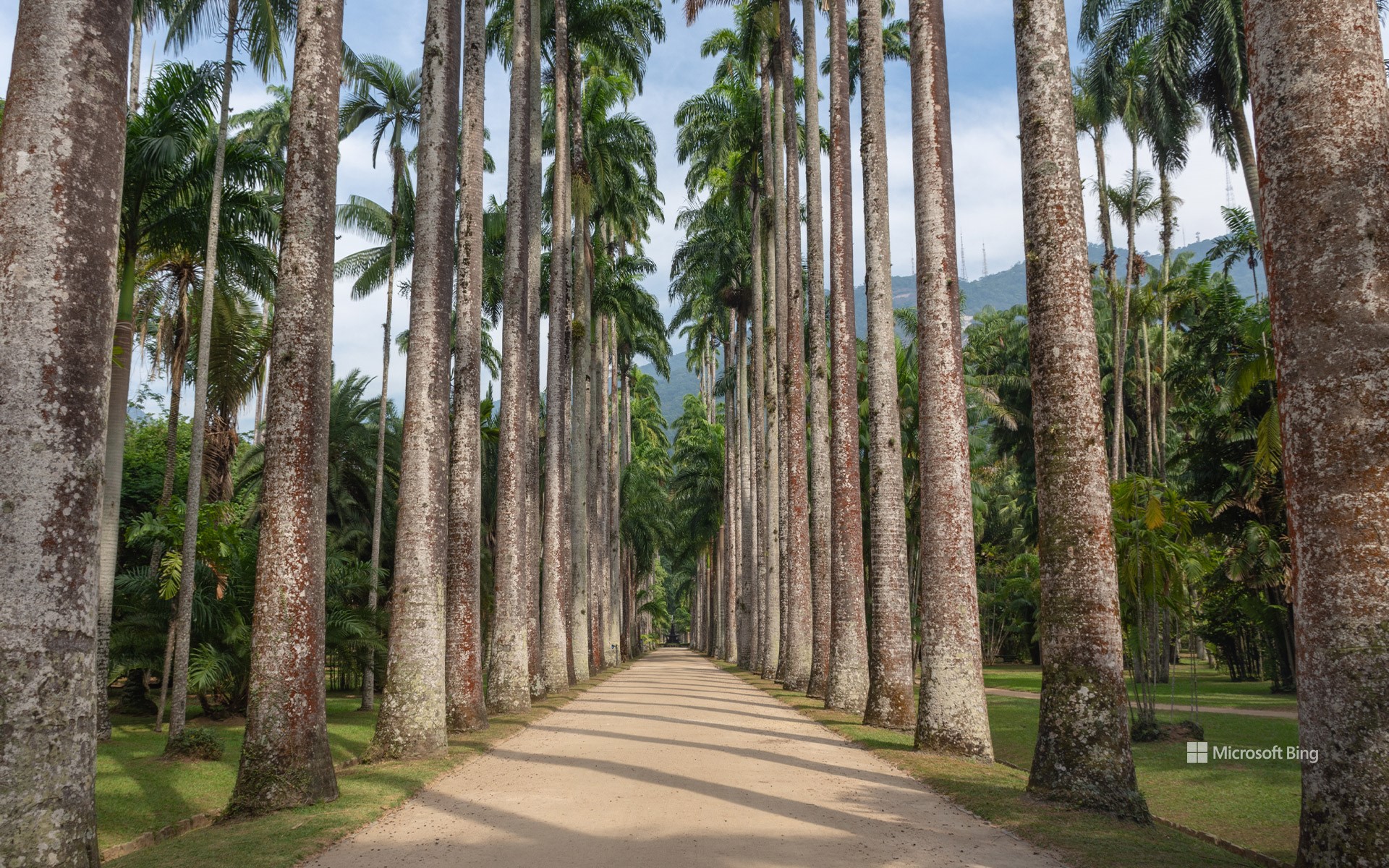
帝王棕榈树,里约热内卢植物园,巴西 Imperial palm trees in the Rio de Janeiro Botanical Garden, Brazil (© Marcia Silva de Mendonca/Getty Images)
带你游花园 Leads you to the garden
里约热内卢植物园
里约热内卢植物园是巴西最早规划的植物园之一,始建于殖民时期,园内有8000多种植物,很多都是罕见的品种。这些植物大部分是在温室中繁殖培育而来的,其中一些还模仿了野生品种的自然生长环境。图中展示的是其中一条名为“皇家棕榈大道”的著名的大道,它由134棵棕榈树组成,长约750米(2460英尺),从入口通往花园。
植物园中的兰花园和仙人掌花园是不容错过的。兰花园从19世纪末就开始收集兰花,如今约有600种不同的兰花,其中大部分原产于巴西。仙人掌园是里约热内卢植物园中最吸引人的地方,自1910年以来,这里收集了大约400种不同的仙人掌。 建立“仙人掌园”的目的还包括为医学研究提供仙人掌,以及为不同的仙人掌品种建立种子库。
